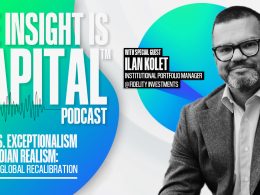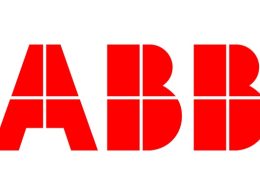by
Key Takeaways
- August and September 2024 saw dramatic shifts in Japan and China’s equity markets, with Japan's policy communication triggering a market spike up in the yen and down in equities, and China’s stimulus leading to a rally—showing how quickly policy can reshape returns.
- The WisdomTree Japan Hedged Equity Fund (DXJ) has demonstrated robust long-term returns despite recent volatility, while the WisdomTree China ex-State-Owned Enterprises Fund (CXSE) has seen high returns largely tied to stimulus-driven rallies.
- DXJ presents strong valuation appeal with a low P/E ratio of 12.53x, especially when compared to China’s CXSE, which carries higher policy risk, reflecting contrasting investment profiles for international investors.
Do you remember August 5, 20241?
How about September 24, 20242?
For investors focused on global equities, these were very important days.
- August 5, 2024: Comments from Japanese authorities about a possible path of rising interest rates catalyzed a massive appreciation of the Japanese yen against the U.S. dollar, while at the same time creating a quick crash in Japan’s equity market—to the tune of more than 20%.
- September 24, 2024: Many investors who had been waiting a long time for a more stimulative shift in China’s policy were treated to just that. It kicked off a series of days when many asset classes, including China’s equities, delivered highly positive returns.
Days like these remind us how dramatic equity market moves can be, and it’s interesting to see the path of returns following these massive moves.
WisdomTree’s Version of Japanese vs. Chinese Equities
WisdomTree has strategies that were directly impacted by these moves:
- The WisdomTree Japan Hedged Equity Fund (DXJ) is designed to track the total return performance, before fees, of the WisdomTree Japan Hedged Equity Index. When looking at this strategy, there are three primary details to keep in mind: 1) The focus is on Japan’s exporters—companies that derive less than 80% of their revenues from within Japan. 2) The weighting is based on the cash dividends paid, not market capitalization and 3) the currency exposure between the yen and the U.S. dollar is neutralized.
- The WisdomTree China ex-State-Owned Enterprises Fund (CXSE) is designed to track the total return performance, before fees, of the WisdomTree China ex-State-Owned Enterprises Index. The primary selection metric for inclusion in this strategy is to have less than 20% of the company’s outstanding shares owned by a government entity.
It is interesting to place the massive aforementioned moves of these markets into better context, which may then allow clearer assessment of the market opportunity offered by each strategy at present.
Figure 1: Standardized Returns

Sources: LSEG, FactSet and WisdomTree, specifically data is from the PATH Fund Comparison Tool, as of 9/30/24. NAV denotes total return performance at net asset value. MP denotes market price performance. You cannot invest directly in an index. Past performance is not indicative of future results. Investment return and principal value of an investment will fluctuate so that an investor’s shares, when redeemed, may be worth more or less than their original cost. Current performance may be lower or higher than the performance data quoted.For the most recent month-end and standardized performance, click the relevant ticker: DXJ, CXSE.
Japan: A Very Bullish Seven Months of 2024
We noticed a lot of investor excitement around Japan during the first seven months of 2024. Then, with one communication regarding the possible path of future policy rate moves at the Bank of Japan, everything changed. August 5, 2024, is a day that any Japan-focused investor will remember.
In figure 2, we see that the NAV return of DXJ went from above 30% all the way back to being slightly negative because of this downdraft.
Now, Japan’s policy makers have retracted the intention behind those statements and it’s interesting that the year-to-date 2024 returns, through nearly the end of October, have largely recovered.3
Figure 2: Japan’s Equity Market Meltdown (and subsequent recovery)

Sources: LSEG, FactSet and WisdomTree, specifically data is from the PATH Fund Comparison Tool, accessed as of 10/24/24. NAV denotes total return performance at net asset value. MP denotes market price performance. You cannot invest directly in an index. Past performance is not indicative of future results. Investment return and principal value of an investment will fluctuate so that an investor’s shares, when redeemed, may be worth more or less than their original cost. Current performance may be lower or higher than the
performance data quoted. For the most recent month-end and standardized performance click here.
CXSE's 2024 experience was quite different. For nearly the first three-quarters of 2024, sentiment surrounding China’s equity market returns was terrible. We see that CXSE's year-to-date return was negative for most of this period.
Then, on September 24, 2024, China’s government announced a plan for stimulus, and we saw CXSE enter a period that ultimately led from returns that were negative on a year-to-date 2024 basis all the way to, at a certain point, being better than 30% on a year-to-date basis. Through the end of October, there was some degree of correction, but the year-to-date figure is still close to 20%.
Figure 3: CXSE’s Tough 2024 Year until Late September

Sources: LSEG, FactSet and WisdomTree, specifically data is from the PATH Fund Comparison Tool, accessed as of 10/24/24. NAV denotes total return performance at net asset value. MP denotes market price performance. You cannot invest directly in an index. Past performance is not indicative of future results. Investment return and principal value of an investment will fluctuate so that an investor’s shares, when redeemed, may be worth more or less than their original cost. Current performance may be lower or higher than the
performance data quoted. For the most recent month-end and standardized performance click here.
There is a certain familiarity among U.S. investors with the S&P 500 Index benchmark. During 2024, this benchmark has been far more stable, trending mostly in an upward direction, than either DXJ or CXSE.
But what about over longer, standardized periods?
For us, China conforms to expectations. CXSE has a pretty good year-to-date and one-year return, but much rougher three-year and five-year figures. People believe that China has been volatile, and that is exactly what we see.
Japan is a bit of a surprise. We believe that few would expect to see the stability of the double-digit returns that DXJ has delivered on a three-, five- and 10-year basis. DXJ is certainly not without volatility, but most people are so familiar with the strength of U.S. equities and the S&P 500 Index benchmark returns that they would assume that international markets could not compare—and DXJ proves them wrong over some of these periods.
Figure 4: DXJ and CXSE vs. S&P 500 Index

Sources: LSEG, FactSet and WisdomTree, specifically data is from the PATH Fund Comparison Tool, as of 9/30/24. NAV denotes total return performance at net asset value. MP denotes market price performance. You cannot invest directly in an index. Past performance is not indicative of future results. Investment return and principal value of an investment will fluctuate so that an investor’s shares, when redeemed, may be worth more or less than their original cost. Current performance may be lower or higher than the performance data quoted. For the most recent month-end and standardized performance, click the relevant ticker:
DXJ, CXSE.
Conclusion: DXJ vs. CXSE from a Valuation Perspective
If we think of our understanding of what is happening in these respective markets:
- Starting with the 2012 election of Prime Minister Shinzo Abe, there has been a better focus in Japan on corporate governance and shareholder returns. That’s not to say that the job is fully done—but the companies and the Tokyo Stock Exchange have been working on this now for more than a decade.4 This has coincided with a significantly weaker level of the yen relative to the U.S. dollar.
- China’s equity markets were on a certain path up until the point when Ant Financial was about to undertake its initial public offering. China’s government took issue with statements from the company’s charismatic founder, Jack Ma, and further actions were the catalyst for many of China’s technology-oriented companies to lose significant percentages of their market capitalizations.5 Over the years, the perception of China’s government relative to Western governments—especially that of the U.S.—has become more and more adversarial. It has also become clear that it is difficult to invest in China’s equities without a clear thesis for more government actions on the stimulus side of the ledger.
Now, we remind everyone that one of the most critical considerations regards how a market is priced. People intuitively see this with a company like Nvidia all the time. The reason why the share price has continued to increase is that with each new bit of news, there is a perception that the results are even better and even stronger than what is currently reflected. It is similar for baskets of stocks. When we see the S&P 500 Index at an estimated price-to-earnings (P/E) ratio at about 22.6 times, that’s telling us that the market’s valuation is high relative to history—but not so high that an immediate correction should be on the horizon. During what we now know of as the Tech Bubble in 2000, this figure was above 30.0 times.6
However, for all of DXJ's performance that we have reviewed in this piece, this group of stocks is still trading at a 12.53-times estimated P/E ratio. Over one, three, five and 10 years, DXJ outperformed CXSE, and this valuation measure is still lower. Additionally, Japan’s equity market does not have the same degree of government policy risk that is currently perceived in China.
Figure 5: DXJ Has a Lower Estimated P/E Ratio than CXSE and the S&P 500 Index

Sources: LSEG, FactSet and WisdomTree, specifically data is from the PATH Fund Comparison Tool, as of 9/30/24. NAV denotes total return performance at net asset value. MP denotes market price performance. You cannot invest directly in an index. Past performance is not indicative of future results. Investment return and principal value of an investment will fluctuate so that an investor’s shares, when redeemed, may be worth more or less than their original cost. Current performance may be lower or higher than the performance data quoted. For the most recent month-end and standardized performance, click the relevant ticker: DXJ, CXSE.
1 Source: Amanda Cooper, “Markets Give Off 'Black Monday' Vibes As Stocks Tank,” Reuters, 8/5/24.
2 Source: Sam Goldfarb & Chelsea Dulaney, “Stock Market News, Sept. 24, 2024: Indexes Climb; Chinese Shares Surge on Stimulus Blitz,” Wall Street Journal, 9/24/24.
3 Source: Toru Fujioka, “BOJ Board Member Urges Slow Approach to Interest Rate Hikes,” Yahoo Finance, 10/16/24.
4 Source: Hideyuki Sano & Yasufumi Saito, “Better Corporate Governance in Japan Pays Off for Investors,” Bloomberg, 5/8/24.
5 Source: Donny Kwok & Scott Murdoch, “Beijing’s Regulatory Crackdown Wipes $1.1 trillion off Chinese Big Tech,” Reuters, 7/12/23.
6 Source: https://www.wisdomtree.com/-/media/us-media-files/documents/resource-library/daily-dashboard.pdf














